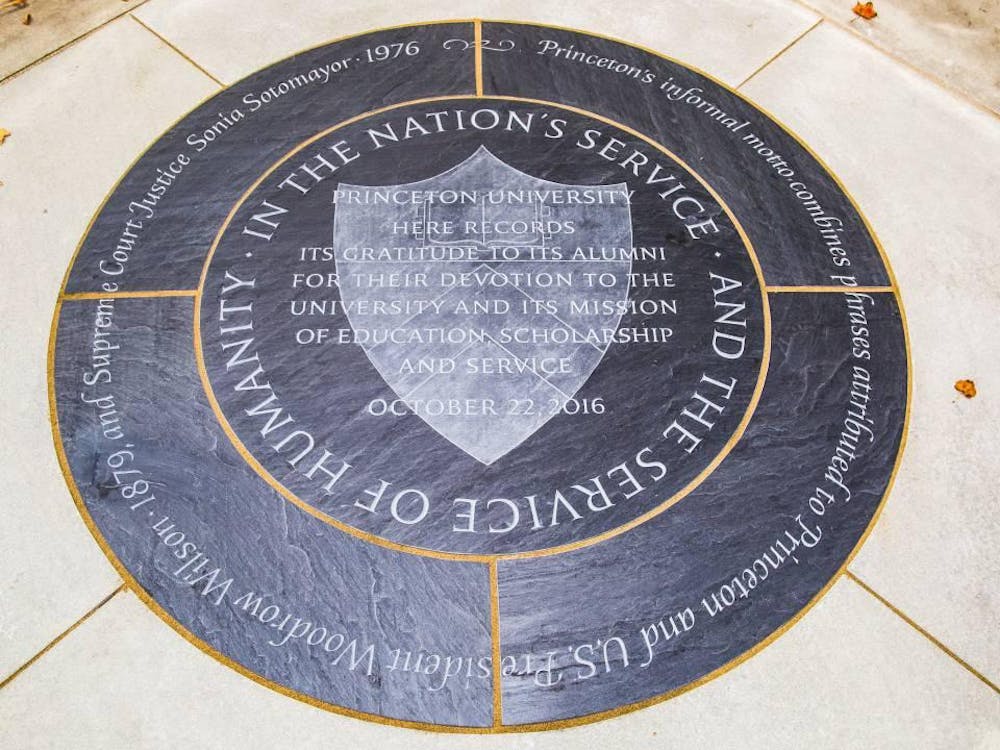Dec. 5, 1989 -Standing in front of Firestone Library Thursday, watching the graduate student demonstration, I found myself feeling a sense of déjà vu. Four years earlier, as a night student at the State University of New York at Stony Brook, I participated in the successful graduate student strike for higher stipends and better housing.
The two situations have their parallels: an unresponsive administration, quality-of-life issues, complaints about cutbacks, no strong organization for graduate student concerns. Even the rhetoric used about graduate-undergraduate student solidarity sounded very familiar, as it was used to urge us not to cross graduate student picket lines.
However, the differences in many ways outweigh the similarities. Grad-undergrad unity was a given at Stony Brook. We were all, well, students. Even the speech by USG president Jason Weinstein '90 Thursday mentioned that at Princeton there are areas in which graduate and undergraduate student concerns differ, a sort of hint at the fact that because of the precept system here, there is a natural tension between the two groups.
At Stony Brook, the drive for a union was a drive for a real union, such as the United Automobile Workers union, not for a "union." That Weinstein mentioned the fact that undergrads revolted in order to get the USG did not strike me as a pleasing precedent. But it is a good warning.
There seem to be two obvious choices that need to be made in the wake of the successful demonstration Thursday: Is the GSU going to end up serving as a network of committees to explore problems with administrators, or is it going to serve as a bargaining agent, either as a traditional incorporated labor union or as a less formal but still powerful voice for bread-and-butter concerns?
Looking back on the lessons of last year's Nassau Hall sit-in, it would seem that the first option is pointless. Several sit-in demands were granted by decree of King Harold, but for the most part, nothing has changed. Committees such as the one on military recruitment prove that it is not difficult to find students and faculty members willing to affix their names to documents of questionable intellectual validity that offer rationalizations for injustice and administrative negligence.
The other option has its drawbacks. There really is little or no precedent of Ivy League grad students striking on economic issues. Though grad students at the University of California at Berkeley recently won recognition for their union, and the students at Stony Brook received a $1,000 stipend raise for their strike, to believe that the same would magically occur here is unreasonable.
The question is whether the time and effort required to build support for such a strike among grad students and working to educate professors, staff and undergrads about the need to support the strike would be better spent in other ways.
There are other considerations, though, that are just as important. I found the strike at Stony Brook empowering. In the class I was taking at the time, our grad student teaching assistant took the time to explain why they were going on strike and asked our support. We had a frank discussion of what this would mean in terms of undergrads (there was talk of grade-burning as protest) and decided to support the strike. As students, we were involved in the process of discussing what we, as a community, felt were the problems of the university, and then we acted on them.
The strike was successful, as professors cancelled their classes and students also honored the picket lines. Though only a few of the demands were granted, it was clear that the balance of power on campus had changed a great deal. Though the president (a Princeton trustee, no less) still continued to rule the campus like a prison camp, it was obvious that the inmates would have to be treated with a little more respect.
It was also important in really making people think about what education is about. Unfortunately, this university is still run like something out of the Middle Ages, with an ideology that stresses a guild-like sense of profession and a "holy mission" of the university as an institution. The strike brought home what bullshit that really is.

The modern university is run like every other American corporation: heavy in upper management, responsive to a pathologically profit-minded governing board, short on any sort of innovative thinking.
The most important thing, for now, is for undergrads to really support the graduate students no matter what they decide to do. If there is a chance that the administration will deal humanely with these grievances, it should be pursued. But judging how things are going, I think it is also important to investigate how these situations have evolved on other campuses and how our president has dealt with these situations.
President Shapiro faced a similar situation as president at the University of Michigan, proving once again that the trustees chose well in finding a man who deals badly with graduate students, as well as faculty and undergraduates, to be our president. Most of all, it is important to realize that the problems of students here are also part of a societal crisis in health care, insurance and real wages, which need to be addressed.
By Russell Owell '91







